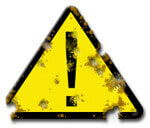Recommendations for Safe Use of Neodymium Magnets.
The strength of magnets neodymium is greater than other types of magnets
Neodymium magnets are extremely powerful magnets that can be hazardous in specific circumstances. It is important to remember that neodymium magnets are very strong and can attract other metal objects, which can lead to injury or destruction to the body.
If you need to work with neodymium magnets, it is important to exercise caution and follow appropriate safety measures, such as wearing protective clothing (e.g., safety goggles), avoiding working with magnets near computers or other electronic devices, and keeping magnets apart from each other to prevent them from attracting and potentially causing harm or shards to be ejected in case of collision, which can pose a threat to your vision.
Neodymium magnets are also very hard and fragile, so it is advisable to avoid striking, throwing, or dropping magnets as they can easily break or split.
In conclusion, neodymium magnets are powerful tools that can be dangerous if not used with proper care, so it is important to observe security precautions when using them.

Work should take place on a metal table or on a magnetic surface. Neodymium magnets must remain where you put them and also not "fly" simultaneously to others.
Children should NEVER be allowed to play with neodymium magnets.
When you have magnets in your hands, remember to keep your hands apart..
If you want to minimize pain, it is recommended to apply ice to pinched skin. In the case of larger magnets, such injuries can result in severe bruises.
Remember to keep your magnets at least 20 cm away from sensitive electrical devices and storage media.
To separate magnets, you need to grasp the top magnet and slide it out of the stack, then pull it apart swiftly.
Seek medical assistance in case of significant injury.
When working with magnets, you should wear safety glasses or work gloves (if necessary).
You should not drill or heat neodymium magnets.
Neodymium magnets retain their magnetic properties for decades when properly handled and stored at room temperature.
Be Cautious with Neodymium Magnets
Neodymium magnets are particularly fragile, resulting in their breakage.
Neodymium magnetic are delicate and will break if allowed to collide with each other, even from a distance of a few centimeters. They are coated with a shiny nickel plating similar to steel, but they are not as hard. In the case of a collision between two magnets, there can be a scattering of small sharp metal fragments in different directions. Protecting your eyes is essential.
Neodymium magnets are primarily characterized by their significant internal force. They attract to each other, and any object that comes in their way will be affected.
Magnets attract each other within a distance of several to around 10 cm from each other. Don't put your fingers in the path of magnet attraction, because a major injury may occur. Magnets, depending on their size, can even cut off a finger or there can be a significant pressure or even a fracture.
Dust and powder from neodymium magnets are highly flammable.
Do not attempt to drill into neodymium magnets. Mechanical processing is also not recommended. Once crushed into fine powder or dust, this material becomes highly flammable.
Keep neodymium magnets away from the wallet, computer, and TV.
The strong magnetic field generated by neodymium magnets can damage magnetic media such as floppy disks, video tapes, HDDs, credit cards, magnetic ID cards, cassette tapes, etc. devices. They can also destroy devices like video players, televisions, CRT computer monitors. Remember not to place neodymium magnets close to these electronic devices.
Maintain neodymium magnets far from youngest children.
Neodymium magnets are not toys. Do not allow children to play with them. Small magnets can pose a serious choking hazard. If multiple magnets are swallowed, they can attract to each other through the intestinal walls, causing severe injuries, and even death.
Keep neodymium magnets as far away as possible from GPS and smartphones.
Strong fields generated by neodymium magnets interfere with compasses and magnetometers used in navigation, as well as internal compasses of smartphones and GPS devices.
Neodymium magnets are the strongest, most remarkable magnets on the planet, and the surprising force between them can surprise you at first.
Make sure to review all the information we have provided. This will help you avoid harm to your body and damage to the magnets.
Neodymium magnets can demagnetize at high temperatures.
Under specific conditions, Neodymium magnets may experience demagnetization when subjected to high temperatures.
People with pacemakers are advised to avoid neodymium magnets.
In the case of neodymium magnets, there is a strong magnetic field. As a result, it interferes with the operation of a heart pacemaker. However, if the magnetic field does not affect the device, it can damage its components or deactivate the device when it is in a magnetic field.
The magnet coating is made of nickel, so be cautious if you have an allergy.
Studies show a small percentage of people have allergies to certain metals, including nickel. An allergic reaction often manifests as skin redness and rash. If you have a nickel allergy, try wearing gloves or avoid direct contact with nickel-plated neodymium magnets.
Exercise caution!
To raise awareness of why neodymium magnets are so dangerous, read the article titled How very dangerous are very strong neodymium magnets?.
